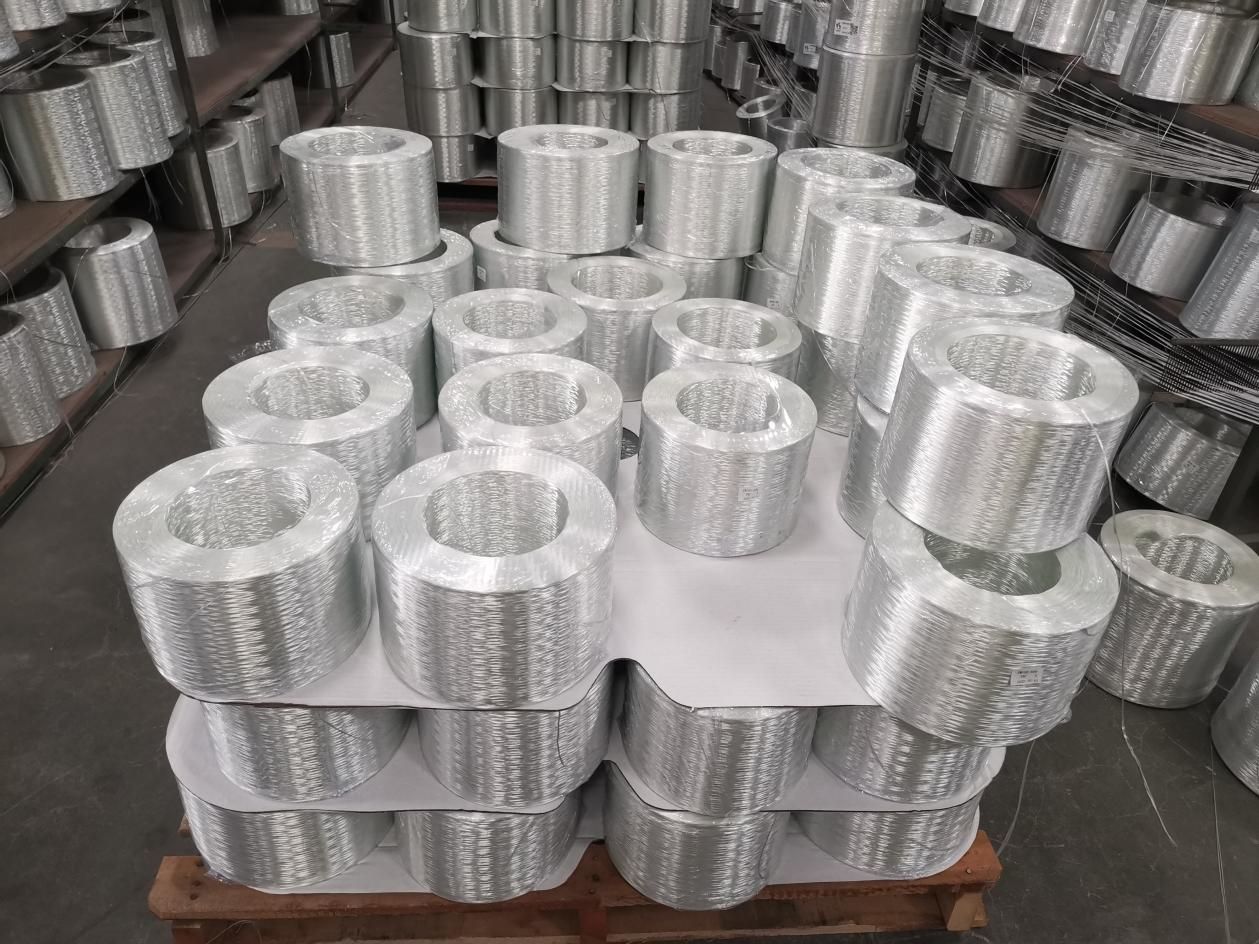
ACM attend CAMX 2023 USA
Asia composite materials (Thailand)co.,Ltd
The pioneers of fiberglass industry in THAILAND
E-mail:yoli@wbo-acm.com WhatsApp :+66966518165
Alkali-free glass fiber yarn is a type of glass fiber material processed through a special preparation technique, different from traditional alkali-based glass fiber yarn. In its preparation, alkali-free glass fiber yarn does not use alkali chemicals, such as alkali metal hydroxides, to treat the glass raw materials. This endows the alkali-free glass fiber yarn with unique properties and advantages, including higher resistance to high temperatures, chemical stability, and mechanical strength. Therefore, it is widely used in various high-temperature applications, such as aerospace, automotive manufacturing, building materials, and the electronics industry, to meet the demands for high-temperature, corrosion, and strength requirements. The unique properties of alkali-free glass fiber yarn make it an important material for reinforcing composite materials, insulation materials, fireproof materials, and high-performance insulation materials.
Deep Analysis of Market Driving Factors for Alkali-Free Glass Fiber Yarn The deep analysis of the market driving factors for alkali-free glass fiber yarn covers multiple aspects, including material characteristics, application areas, market trends, and global economic factors. The high performance and environmental-friendly nature of alkali-free glass fiber yarn offer broad market prospects in many fields. However, market participants need to closely monitor industry trends and global economic conditions to formulate strategies that adapt to market demands. Here are some key driving factors:
Demand for High-Temperature Performance: Alkali-free glass fiber yarn is favored for its excellent high-temperature resistance. In fields such as aerospace, automotive manufacturing, petrochemical industry, and electronics, materials that can withstand extreme temperature conditions are required, and alkali-free glass fiber yarn provides an ideal solution.
Increasing Environmental Awareness: The demand for environmentally friendly and sustainable materials is rising. Alkali-free glass fiber yarn, due to not using alkali chemicals in its preparation, is considered a more environmentally friendly choice, aligning with modern society’s concept of sustainable development.
Emerging Technology Applications: The development of emerging technology fields such as wind energy, solar energy, electric vehicles, and aerospace promotes the demand for high-performance materials. These applications often require materials that are resistant to high temperatures and have high strength, which alkali-free glass fiber yarn satisfies.
Growth in Construction and Infrastructure Projects: The growth of the construction industry and infrastructure projects also promotes the growth of the alkali-free glass fiber yarn market, as it has potential applications in reinforcing concrete, insulation materials, and fireproof materials.
Market Growth in the Asia-Pacific Region: Economic growth and industrialization in the Asia-Pacific region have driven the growth of the alkali-free glass fiber yarn market, as the demand for manufacturing and infrastructure construction in this region continues to rise.
Global Supply Chain and Trade Environment: The stability of the global supply chain and international trade policies also impact the market. Disruptions in the supply chain or trade restrictions may lead to price fluctuations and market uncertainty.
Detailed Study of Future Technology Trends of Alkali-Free Glass Fiber Yarn Alkali-free glass fiber yarn has broad prospects in the field of high-performance materials. Future development trends will focus on improving material performance, exploring new application areas, improving production processes, and meeting environmental and sustainability requirements. As technology continues to evolve, this field will continue to provide critical material support for various industrial and technological applications. Here are detailed studies of future technology trends for alkali-free glass fiber yarn:
Enhancement of Material Performance: Future research will focus on improving the high-temperature resistance of alkali-free glass fiber yarn to meet more extreme application needs. This may include improving the chemical composition and crystal structure of glass fibers to enhance thermal stability. Researchers will seek to improve the strength and stiffness of alkali-free glass fiber yarn, making it more suitable for high-strength structural materials and lightweight composite materials.
Exploration of New Application Areas: With the rise of renewable energy and electric vehicles, alkali-free glass fiber yarn may find new applications in energy storage and battery technology, such as in the preparation of lithium-ion battery separators. Improved optical performance and low dispersion characteristics may make alkali-free glass fiber yarn an important material for optical components and fiber optic communications.
Improvement of Production Processes: Researchers will continue to improve the preparation process of glass fibers to increase production efficiency and reduce production costs. Reducing or eliminating the use of harmful chemicals in the preparation process will continue to be a key trend to meet environmental regulations and market demands.
Customization and Multifunctional Materials: The future may see more customized and multifunctional alkali-free glass fiber yarns to meet the needs of different application areas. This may include adding nanomaterials, ceramics, or polymers to the material to impart specific properties.
Global Market Expansion: The market growth in the Asia-Pacific region still has potential, so seeking new market opportunities in this region may be one of the future trends. Strengthening international cooperation and trade partnerships will help expand the global market share
Post time: Nov-15-2023




